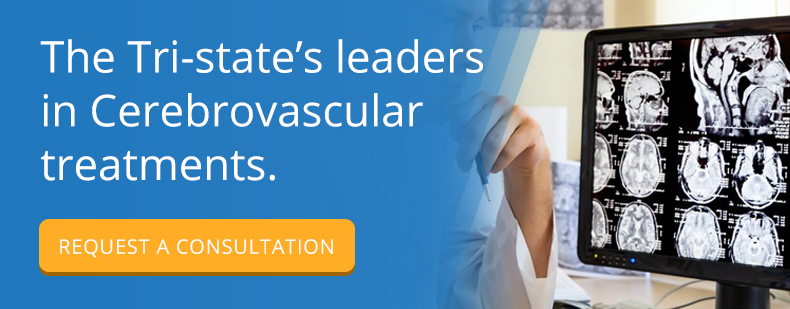Moderate to severe blockage in a carotid artery puts you in danger of having a stroke that can affect your physical and cognitive abilities. If you have significant blockage in your carotid artery, you may need to undergo a carotid endarterectomy to remove plaque from the artery.
If you’re feeling worried about your upcoming procedure, learning more about the carotid endarterectomy procedure steps may help you relax as you prepare for the surgery.
Preparing for the Procedure
After your surgery and hospital stay are scheduled your doctor will give you instructions on how to prepare for you carotid endarterectomy procedure. If you take medications for other health conditions, your doctors may modify your dosing before surgery, and you may be prescribed new medications as well. About a week or more before your procedure, your medical doctor will schedule tests to ensure that surgery is safe for you and to establish the location of your blocked artery. If you have a history of heart disease, you may even need to see a cardiologist before the procedure.
On the day of your surgery, you’ll need to check in to the hospital on time so that preparations for your surgery can be done on schedule. You can expect to have a medication to help you relax and you will be taken to the operating room.
Carotid endarterectomy surgery is typically done under general anesthesia, which means you will be asleep through the procedure. You will lie on your back on the operating table with your head turned to one side so that the affected artery faces up.
During the surgery, a trained anesthesiologist carefully monitors your vital signs, and you will receive oxygen through a mask or tube. These precautions are taken to avoid complications and ensure your safety while surgery is taking place. Surgery typically takes about one hour.
Administering Anesthesia
Carotid endarterectomy procedure steps generally begin with the administering of a general anesthesia. General anesthesia causes complete sedation, so you will not be conscious during the carotid endarterectomy.
During the procedure, a trained anesthesiologist will carefully monitor your vital signs. Your doctor will also use a mask or tube to deliver oxygen to your lungs. These precautions help ensure your safety while you undergo carotid endarterectomy.
Making the Incision
Your doctor will need to make an incision in your neck to access the affected artery. Before making the incision, though, a member of your surgical team will clean the area with an antiseptic solution to help prevent infection.
Today’s surgical tools make it possible for surgeons to follow carotid endarterectomy procedure steps through very small incisions. However, the specific size of the incision can depend on several variables. If you are concerned about the exact size and location of your incision, talk to your doctor for clarification. He or she can give you more accurate information based on your unique health condition.
Diverting Blood to the Brain
Your surgeon needs to redirect blood flow away from your area during the carotid endarterectomy, so he or she will use a shunt that diverts blood from the surgical site to the brain. The shunt, which is a small tube, accomplishes two important things: By diverting blood, it helps your surgeon perform the procedure without interference from excess blood. It also makes sure that your brain receives enough blood during the procedure. The procedure can also be done without a shunt, but that depends on your unique anatomy and other factors. Ask your neurosurgeon what his or her plan is, if you are not sure about the exact steps of the surgery.
Removing Plaque From the Artery
After making an incision in your artery and diverting blood flow, your neurosurgeon will remove plaque from the inside of the artery. Removing the plaque can greatly lower your risk of ischemic stroke, a condition that occurs when a blood clot breaks away from the plaque and travels to the brain.
Removing the Shunt and Closing the Incision
Once your neurosurgeon has removed plaque from the artery, he or she will carefully remove the shunt and close the incision in your neck. Closing the incision may require stitches, although some doctors prefer using adhesive strips whenever possible.
You will remain under anesthesia throughout this part of the procedure, so you shouldn’t experience any discomfort.
Recovering in the Hospital
After your procedure, you can expect to recover in the hospital for a day or two so that your care team can monitor your vital signs and watch for any complications. You may spend the first few hours after the surgery in an intensive care unit as you recover from anesthesia. Then you will be transferred to your hospital room.
You may require a tube in your incision to help fluids drain. This tube will be removed before you leave the hospital.An ultrasound test will also be performed to ensure that the artery is clear. When you are ready to go home, you will be given instructions on caring for your incision, watching for complications and resuming your daily activities.
Recovering at Home
Recovering from a carotid endarterectomy typically takes three to four weeks. In the first week or so of your recovery, you’ll be advised to rest and avoid activities like driving, lifting and strenuous movement. Your doctors will prescribe medications for pain and anticoagulant medications such as aspirin or Plavix to keep blood from clotting.
You’ll need to follow your doctor’s instructions for taking care of your incision. Keep the incision site clean and dry and be careful not to reopen it. If your incision was closed with adhesive strips, they will fall off in a week or so. Your doctors will schedule an appointment to remove your stitches and check your progress.
During your recovery, you can expect some neck pain and numbness in your jaw and ear area. As your recovery progresses, you can gradually resume your normal activities. To keep plaque from redeveloping in the artery, though, you may need to make some significant changes to your diet and lifestyle.
Factors that contribute to carotid artery disease include smoking, weight gain, an unhealthy diet and lack of exercise. If those conditions still exist after surgery, your artery could become blocked again – a process called restenosis. To reduce that risk, your doctor may recommend that you:
- Stop smoking
- Lose excess weight
- Exercise more – at least 30 minutes on most days
- Avoid foods high in sodium, sugar and harmful saturated and trans fats
- Eat more fruits, vegetables and lean proteins
- Lower your blood pressure
If necessary, you may also be prescribed medications to treat hypertension and high cholesterol. Your doctors will schedule follow-ups as needed to check your progress and determine whether your artery remains clear of plaque.
Possible Complications After Carotid Endarterectomy Procedures
Most patients recover from carotid endarterectomies without any serious problems. You should, however, pay attention to any changes in your health. Some patients report problems, such as:
- Vision changes
- Fevers
- Chills
- Pain at and around the incision site
- Headaches
- Weakness or difficulty moving
- Memory loss, dizziness and trouble speaking
If you notice any of these signs, you should contact your doctor immediately for advice.
Neurosurgeons follow these carotid endarterectomy procedure steps to help patients avoid future health conditions caused by strokes. If your doctor recommends the procedure, you should find an experienced neurosurgeon who can perform it for you.


